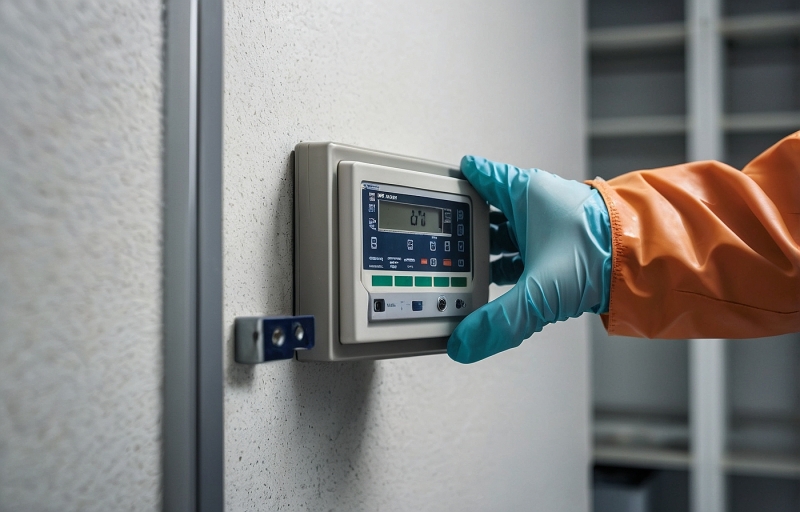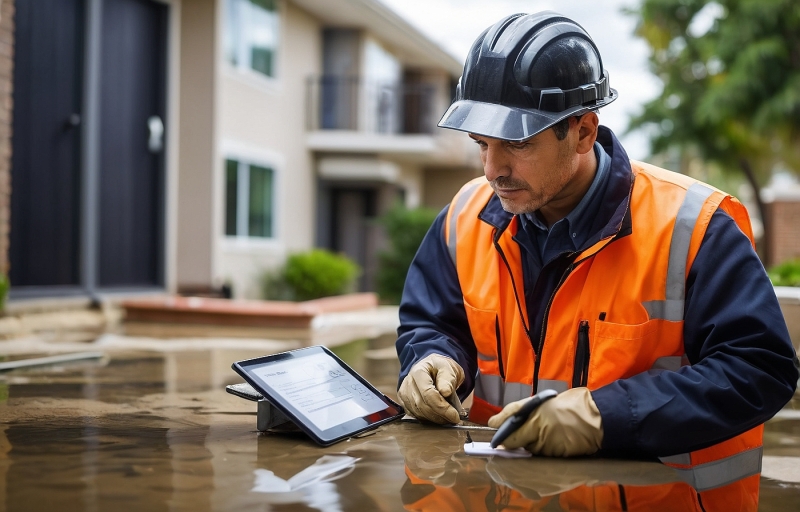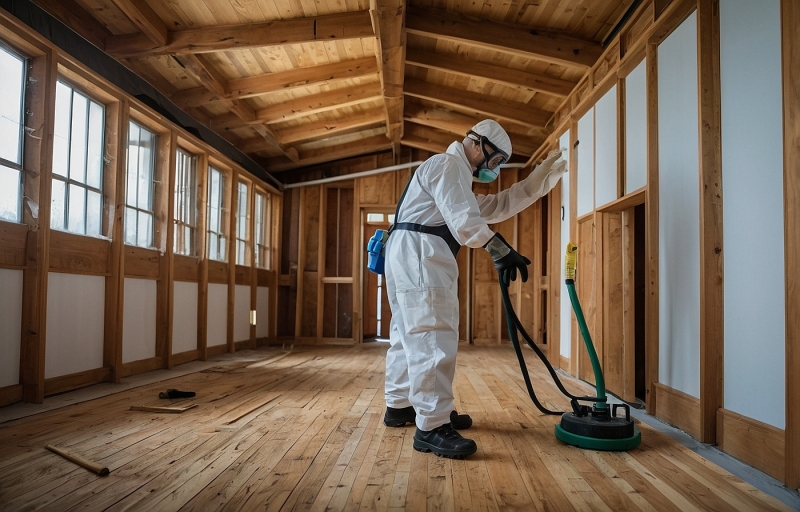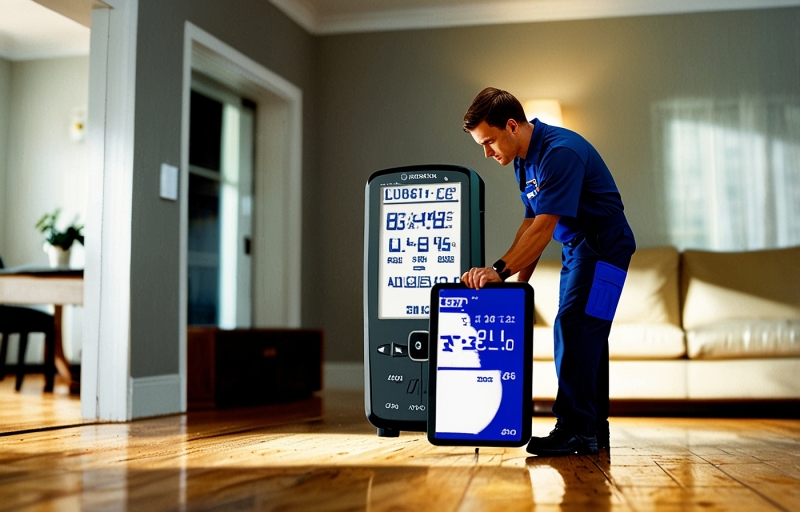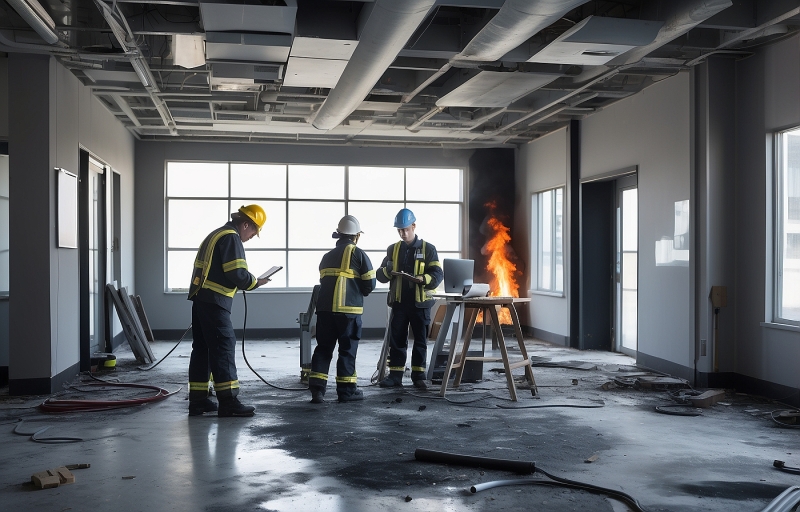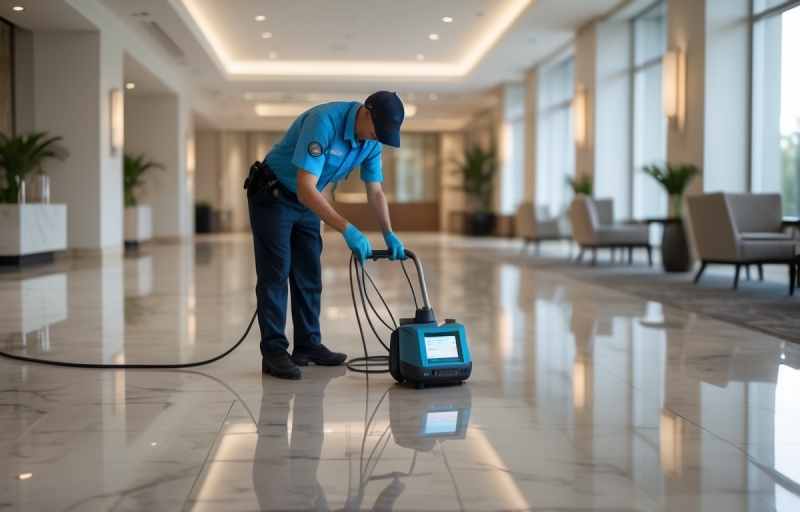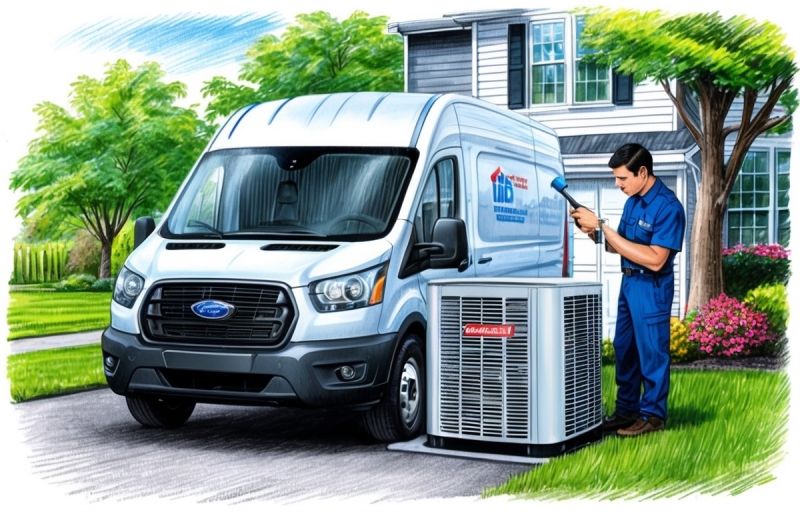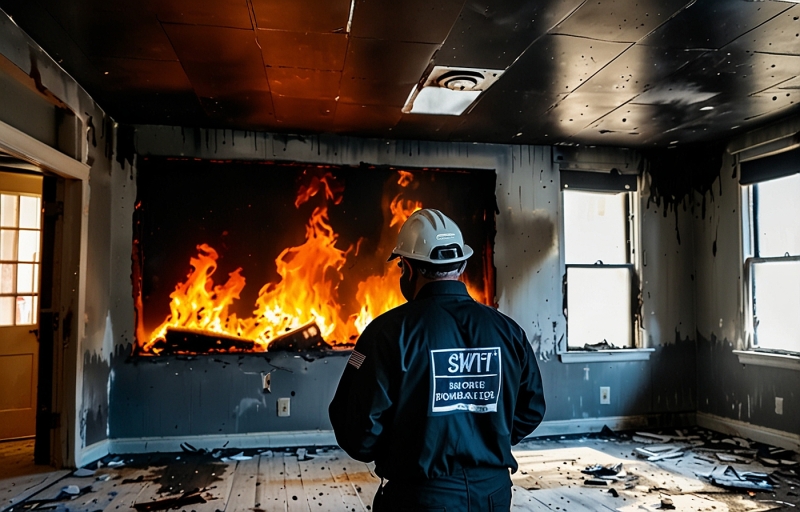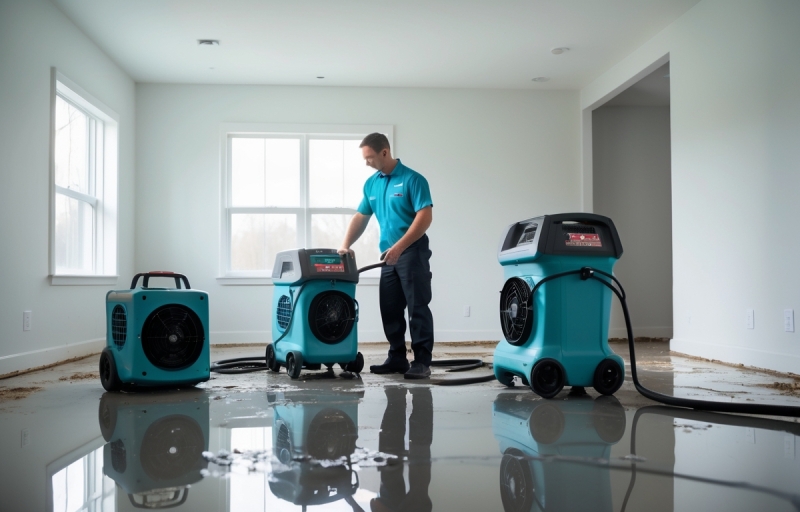Owning rental properties can be a rewarding investment, but it also comes with its share of responsibilities—especially when it comes to preventing costly water damage. Water intrusion can lead to structural issues, mold growth, and expensive repairs if not addressed promptly. That’s why it’s essential to take proactive steps to protect your rental properties from water damage. Whether you’re dealing with heavy rains, plumbing leaks, or appliance malfunctions, safeguarding your property can save you time, money, and stress in the long run. At COMMITTED TO QUALITY SERVICE, we specialize in Water Damage Restoration, using advanced equipment designed specifically for drying structures affected by severe water damage. Our team offers Fast, Friendly, and Professional Service to help you recover quickly and efficiently. If you need immediate assistance, Call Us Now at 855-933-7935. Protect your investment today and learn how to prevent water damage before it becomes a major issue.
Inspect the Roof and Gutters Regularly
One of the most crucial steps in protecting rental properties from water damage is maintaining the roof and gutters. These components serve as the first line of defense against rain, snow, and other environmental elements. A compromised roof or clogged gutter can lead to significant water intrusion, causing costly repairs and potential health hazards like mold growth. Regular inspections are essential to ensure that these structures remain in optimal condition and continue to protect the property effectively.
Roofs are constantly exposed to harsh weather conditions, which can cause wear and tear over time. According to the National Roofing Contractors Association (NRCA), it is recommended to inspect your roof at least twice a year, preferably in the spring and fall. During these inspections, look for missing or damaged shingles, signs of sagging, and any areas where water might pool. Even small issues, if left unattended, can escalate into major problems. For instance, a minor leak can eventually lead to structural damage, electrical hazards, and extensive mold growth.
Gutters play an equally important role by directing rainwater away from the property’s foundation. When gutters are clogged with leaves, dirt, and debris, water can overflow and seep into the building, leading to basement flooding and foundation damage. The Insurance Information Institute states that water damage and freezing account for almost 29 percent of all homeowners insurance claims. This statistic highlights the importance of keeping gutters clean and functional to prevent water-related issues.
To effectively maintain the roof and gutters, property owners and managers should implement a regular inspection and maintenance schedule. Here are some practical steps to follow:
- Visually inspect the roof for missing, cracked, or curling shingles.
- Check for signs of water damage on the ceilings and walls inside the property.
- Ensure that gutters and downspouts are securely attached and free of debris.
- Trim overhanging tree branches that could damage the roof or clog the gutters.
- Install gutter guards to minimize the accumulation of leaves and debris.
- Hire a professional roofing contractor for a thorough inspection at least once a year.
It is also important to be proactive rather than reactive. Waiting until a leak becomes visible can result in more extensive and expensive repairs. As the saying goes,
"An ounce of prevention is worth a pound of cure."
By addressing minor issues early, property owners can save thousands of dollars in repair costs and avoid tenant dissatisfaction.
Another critical aspect is understanding the signs of hidden water damage. Sometimes, water intrusion is not immediately visible but can cause significant damage over time. Learning how to identify hidden water damage early can be invaluable. For more detailed guidance, you can refer to our resource on how to identify hidden water damage early.
In addition to regular inspections, investing in professional maintenance services can be highly beneficial. Professional roofers and gutter cleaners have the expertise and equipment to detect and address issues that might be overlooked during a DIY inspection. If you are looking for reliable services, you can explore our comprehensive range of services designed to protect your property from water damage and other hazards.
Moreover, documenting each inspection and maintenance activity is crucial. Keeping a detailed record helps track the condition of the roof and gutters over time and provides valuable evidence if insurance claims are necessary. It also demonstrates to tenants that the property is well-maintained, which can enhance tenant satisfaction and retention.
For property owners managing multiple rental units, creating a standardized inspection checklist can streamline the process. This checklist should include all critical inspection points and maintenance tasks, ensuring consistency across all properties. Some examples of checklist items include:
- Inspect flashing around chimneys, vents, and skylights for signs of damage.
- Look for moss or algae growth, which can indicate moisture retention.
- Ensure that attic ventilation is adequate to prevent moisture buildup.
- Check that downspouts direct water at least five feet away from the foundation.
- Examine soffits and fascia boards for signs of rot or water damage.
Incorporating technology can also enhance the inspection process. Drones, for example, can provide a bird’s-eye view of the roof, making it easier to spot potential issues without the need for ladders or scaffolding. Thermal imaging cameras can detect moisture beneath the roof surface, identifying leaks that are not visible to the naked eye.
It is also wise to educate tenants about the importance of reporting any signs of water damage immediately. Early detection can make a significant difference in preventing extensive damage. Providing tenants with a simple guide on what to look for, such as water stains, musty odors, or peeling paint, can empower them to act quickly.
For those interested in learning more about how we support property owners in maintaining their investments, please visit our about page. Our team is dedicated to helping you protect your rental properties through expert advice, quality workmanship, and exceptional customer service.
In conclusion, regular inspection and maintenance of the roof and gutters are fundamental practices for preventing water damage in rental properties. By staying vigilant, addressing issues promptly, and leveraging professional services when necessary, property owners can safeguard their investments, ensure tenant satisfaction, and avoid costly repairs. For more tips and expert insights, be sure to check out our blog, where we share valuable information on property maintenance and restoration.
Seal Windows and Doors Properly
One of the most crucial steps in protecting rental properties from water damage is ensuring that all windows and doors are properly sealed. Windows and doors are common entry points for moisture, especially during heavy rainstorms, high humidity, or when snow begins to melt. If these areas are not adequately sealed, water can seep into the property, leading to structural damage, mold growth, and costly repairs. To prevent these issues, it is essential to inspect all windows and doors regularly for any signs of wear and tear, such as cracked caulking, gaps, or warping. Replacing old or damaged weather stripping and applying fresh caulk around frames can significantly reduce the risk of water intrusion. It is also important to check that doors and windows close tightly and that there are no visible gaps where water could enter. For rental property owners who may not have the time or expertise to perform these inspections themselves, hiring a professional restoration service can be a wise investment. Companies like Projekt Restoration offer a range of services designed to help property owners maintain their buildings and prevent water damage before it becomes a major issue.
In addition to sealing windows and doors, property owners should also consider installing storm doors and windows, especially in areas prone to severe weather. These additional barriers provide an extra layer of protection against rain and wind-driven moisture. Regular maintenance is key; even the best-installed seals can degrade over time due to exposure to the elements. Therefore, setting up a maintenance schedule to inspect and repair seals at least twice a year can save property owners from unexpected water damage. If you are unsure about the best practices for maintaining your rental property, visiting the FAQ section of our website can provide valuable insights and answers to common questions.
Another important aspect to consider is the material quality of the windows and doors themselves. Investing in high-quality, water-resistant materials can make a significant difference in the long-term durability of your rental property. Vinyl, fiberglass, and treated wood are excellent choices for window and door frames because they resist moisture better than untreated wood or low-grade materials. Additionally, ensuring that the property has proper drainage systems around windows and doors can help divert water away from these vulnerable areas. Installing gutters, downspouts, and sloped landscaping can prevent water from pooling near the foundation and seeping into the property through poorly sealed openings. For more detailed information on how water damage can affect your property and the steps you can take to prevent it, you can explore our dedicated water damage resource page.
Ultimately, taking proactive measures to seal windows and doors properly is a fundamental part of maintaining a rental property and safeguarding it against water damage. It not only protects the structural integrity of the building but also ensures the comfort and safety of tenants, which can lead to higher tenant satisfaction and retention rates. By staying vigilant and addressing potential vulnerabilities early, property owners can avoid the stress and financial burden associated with extensive water damage repairs.
Install a Sump Pump in Basements
One of the most effective ways to protect rental properties from water damage is by installing a sump pump in the basement. Basements are particularly vulnerable to water intrusion due to their location below ground level, making them prime targets for flooding during heavy rains, rapid snowmelt, or plumbing failures. A sump pump acts as a critical line of defense by automatically removing accumulated water and directing it away from the property, thus preventing costly water damage and potential structural issues. When considering a sump pump installation, it is important to choose a high-quality unit that matches the size and needs of the property. Regular maintenance is also essential to ensure the pump remains functional when needed most. Property owners should inspect the sump pump at least twice a year, especially before the rainy season, to check for clogs, mechanical failures, or power issues. Installing a battery backup system is also advisable to keep the sump pump operational during power outages, which often coincide with severe storms. For landlords and property managers, investing in a sump pump not only protects the physical structure but also preserves tenant satisfaction and reduces liability risks. Additionally, it is wise to educate tenants about the sump pump’s purpose and basic troubleshooting steps to ensure quick action if a problem arises. For those seeking professional assistance, Projekt Restoration offers comprehensive services that include water damage prevention and restoration solutions tailored to rental properties. Understanding the importance of proactive measures can save thousands of dollars in repairs and maintain the long-term value of the investment. To learn more about how water damage can impact your property and the best practices for prevention, visit our detailed water damage resource page. If you are unsure whether your property is at risk or need guidance on the right sump pump system, our team is ready to help. Feel free to explore our contact page to get in touch with our experts for personalized advice and service options. Taking the initiative to install a sump pump is a smart, proactive step that ensures your rental property remains safe, dry, and profitable for years to come.
Check Plumbing Systems for Leaks
One of the most effective ways to protect rental properties from water damage is by conducting regular inspections of the plumbing systems. Plumbing issues are often the root cause of water damage, and even a small leak can lead to significant problems if left unaddressed. Property owners and managers should schedule routine checks to identify any signs of leaks, corrosion, or wear and tear in pipes, faucets, toilets, and water heaters. Early detection of plumbing issues can prevent costly repairs and extensive damage to the property. It is important to inspect both visible and hidden plumbing components, including under sinks, behind appliances, and within walls. If you are unsure about how to perform a thorough inspection, hiring a professional plumbing service is a wise investment. They have the expertise to detect hidden leaks that might otherwise go unnoticed. Additionally, installing leak detection devices can provide an extra layer of protection by alerting you to the presence of moisture before it becomes a major issue.
Another critical step is to educate tenants about the importance of reporting any signs of leaks immediately. Tenants are often the first to notice issues such as dripping faucets, running toilets, or damp spots on walls and ceilings. Encouraging prompt reporting can significantly reduce the time between the onset of a leak and its repair, minimizing potential damage. Providing tenants with a simple checklist of what to look for can empower them to be proactive in maintaining the property. Furthermore, it is beneficial to have a clear and efficient process in place for handling maintenance requests related to plumbing issues. This ensures that problems are addressed quickly and efficiently, protecting both the property and the tenants’ living conditions.
In addition to regular inspections and tenant education, it is essential to be aware of the age and condition of the plumbing system. Older pipes, especially those made from materials like galvanized steel or polybutylene, are more prone to leaks and failures. If the plumbing system is outdated, it may be worth considering a proactive upgrade to more durable and modern materials such as copper or PEX piping. While this may involve an upfront investment, it can save significant amounts of money and hassle in the long run by preventing water damage and the associated repair costs. Regular maintenance, such as flushing the water heater to remove sediment buildup and checking water pressure levels, can also extend the life of the plumbing system and reduce the risk of leaks.
For property owners who want to ensure comprehensive protection, partnering with a professional restoration company can be highly beneficial. Companies like Projekt Restoration offer a range of services designed to help property owners maintain their investments and respond quickly to any water damage incidents. Their expertise in water damage restoration, mold remediation, and property repair ensures that any issues are handled promptly and professionally. By working with experienced professionals, property owners can have peace of mind knowing that their rental properties are well-protected against water damage risks.
In the unfortunate event that water damage does occur, it is crucial to act swiftly to mitigate the damage and begin the restoration process. Understanding how to identify hidden water damage early can make a significant difference in minimizing the impact. Resources like the guide on how to identify hidden water damage early provide valuable information on spotting the subtle signs of water issues before they escalate. Being proactive and informed can help property owners take immediate action, reducing repair costs and preserving the value of their rental properties.
Ultimately, maintaining a vigilant approach to plumbing system inspections, educating tenants, upgrading outdated systems, and partnering with professional restoration services are all key strategies for protecting rental properties from water damage. By implementing these practices, property owners can safeguard their investments, ensure tenant satisfaction, and avoid the costly and disruptive consequences of water-related issues. Regular attention to the plumbing system is not just a maintenance task; it is a critical component of responsible property management that pays off in the long term.
Maintain Proper Grading Around the Property
One of the most crucial yet often overlooked steps in protecting rental properties from water damage is ensuring that the land around the building is properly graded. Proper grading means that the ground slopes away from the foundation, directing rainwater and melting snow away from the structure rather than allowing it to pool near the base. When water accumulates around the foundation, it can seep into basements or crawl spaces, leading to structural damage, mold growth, and costly repairs. To prevent these issues, property owners should regularly inspect the grading around their rental properties, especially after heavy storms or landscaping projects. Ideally, the soil should slope away from the foundation at a rate of at least six inches over the first ten feet. If the slope is insufficient, adding soil and compacting it properly can help reestablish the correct grade. It is also important to ensure that downspouts and gutters are functioning correctly and directing water at least five to ten feet away from the property. Investing in professional landscaping services can be a wise decision to maintain proper grading and drainage systems. Additionally, property owners should be aware of signs of poor grading, such as water pooling near the foundation, cracks in the basement walls, or a musty smell indoors. Addressing these issues promptly can prevent more extensive water damage and save thousands of dollars in repairs. For those seeking expert assistance, Projekt Restoration offers a range of specialized services designed to protect properties from water-related issues. Understanding the importance of proper grading is part of a broader strategy to safeguard rental investments, and property owners can learn more about effective water damage prevention by visiting the blog section. If you are unsure whether your property has the correct grading or if you suspect hidden water damage, it is advisable to consult professionals who can assess the situation thoroughly. You can also explore our detailed guide on how to identify hidden water damage early to stay proactive in maintaining your rental property. Taking these preventive measures ensures not only the longevity of the property but also the safety and satisfaction of tenants, ultimately protecting your investment for years to come.
Use Water Leak Detection Devices
One of the most effective ways to safeguard rental properties from costly water damage is by installing water leak detection devices. These smart devices are designed to monitor moisture levels and detect leaks early, often before they become major problems. By placing sensors near appliances like washing machines, water heaters, under sinks, and in basements, property owners can receive immediate alerts when a leak is detected. This early warning system allows for quick action, minimizing the extent of water damage and reducing repair costs. Modern leak detection systems can even be connected to smartphones, providing real-time notifications no matter where you are. Some advanced models are capable of automatically shutting off the water supply if a significant leak is detected, offering an extra layer of protection. For landlords and property managers, this technology is invaluable in maintaining the integrity of their investments and ensuring tenant satisfaction. Additionally, insurance companies often offer discounts on premiums for properties equipped with leak detection systems, making it a financially smart decision as well. If you are looking to enhance your property’s resilience against water damage, consider exploring our services to find the right solutions tailored to your needs. Regular maintenance and inspections, combined with the use of leak detection devices, create a comprehensive defense against water-related issues. For more insights on how to proactively protect your rental property, visit our detailed blog where we share expert tips and advice. Should you need professional assistance or have any questions, feel free to reach out through our contact page. Investing in water leak detection devices is not just about preventing damage; it is about preserving the value of your property, ensuring tenant safety, and avoiding the stress and expense of emergency repairs.
Insulate Pipes to Prevent Freezing
One of the most effective ways to protect rental properties from costly water damage is by ensuring that all pipes are properly insulated, especially in regions that experience cold winters. When temperatures drop, uninsulated pipes are at a high risk of freezing, which can lead to cracks or bursts, causing extensive water damage throughout the property. Insulating pipes is a proactive measure that not only prevents freezing but also helps maintain energy efficiency by reducing heat loss. Property owners should focus on insulating pipes located in unheated areas such as basements, attics, garages, and crawl spaces. Using foam pipe insulation sleeves, heat tape, or pipe wrap insulation are common and affordable methods to safeguard plumbing systems. It is also important to seal any gaps or cracks in walls and around pipes where cold air might enter, further protecting the pipes from freezing temperatures.
Regular inspections are crucial to ensure that insulation remains intact and effective over time. Property owners should schedule seasonal maintenance checks, particularly before winter, to identify any vulnerabilities. If you are unsure about the best insulation methods or need professional assistance, consider exploring our services to find expert solutions tailored to your property’s needs. Additionally, educating tenants about the importance of keeping the heat on during extremely cold weather, even when they are away, can significantly reduce the risk of frozen pipes. Encouraging tenants to open cabinet doors under sinks to allow warm air to circulate around plumbing can also be beneficial.
In the unfortunate event that a pipe does freeze, it is critical to act quickly. Turning off the main water supply and contacting a professional restoration service can minimize the extent of the damage. Our team at Projekt Restoration specializes in handling emergencies like these and can guide you through the recovery process. You can learn more about our approach by visiting our detailed how it works page. Prevention, however, remains the best strategy. By investing in proper pipe insulation and routine maintenance, property owners can avoid the stress, expense, and disruption that water damage can cause.
Moreover, understanding the broader risks associated with water damage is essential. Frozen pipes are just one of many potential hazards. To gain a deeper insight into how water damage can impact your rental property and how to address it, check out our comprehensive water damage resource. Taking the time to implement preventive measures like pipe insulation not only protects your investment but also ensures the safety and comfort of your tenants, fostering a positive rental experience for everyone involved.
Educate Tenants on Water Damage Prevention
One of the most effective strategies for protecting rental properties from water damage is to educate tenants on prevention methods. Tenants are the first line of defense against potential water-related issues since they live in the property daily and can quickly spot early warning signs. Begin by providing tenants with a clear and concise guide outlining the importance of water damage prevention and the steps they should take to minimize risks. This guide can include instructions on how to properly use appliances like dishwashers and washing machines, the importance of reporting leaks immediately, and how to recognize signs of hidden water damage such as discoloration, musty odors, or warped flooring. You can also refer tenants to resources like our detailed article on how to identify hidden water damage early for more in-depth information.
Regular communication is key. Encourage tenants to perform simple maintenance tasks, such as checking under sinks for leaks, ensuring that the caulking around tubs and showers remains intact, and keeping gutters clear of debris if they have access to them. Hosting an annual or bi-annual inspection can also help reinforce the importance of vigilance and allow you to catch minor issues before they escalate. Providing tenants with a checklist of what to look for during seasonal changes, such as frozen pipes in winter or heavy rain leaks in spring, can further empower them to act quickly and responsibly.
It is also beneficial to educate tenants about the proper way to shut off the main water supply in case of an emergency. Knowing how to act swiftly during a burst pipe or major leak can significantly reduce the extent of water damage. Visual aids, such as diagrams or short instructional videos, can make this information more accessible and easier to understand. Additionally, make sure tenants know who to contact in case of an emergency and provide them with a list of trusted contractors or restoration services, such as those offered through our services page.
Another important aspect is setting clear expectations in the lease agreement regarding tenant responsibilities related to water damage prevention. Outline the requirement to report any signs of leaks or moisture immediately and specify any maintenance tasks they are responsible for. This not only protects your property but also ensures that tenants understand their role in maintaining a safe and habitable living environment.
Visual reminders can also be effective. Posting simple signs near sinks, toilets, and laundry areas reminding tenants to report leaks or unusual moisture can keep water damage prevention top of mind. You might also consider sending seasonal email reminders with tips and checklists to reinforce the importance of proactive maintenance.
In addition to educating tenants, it is crucial to provide them with the right tools and resources. For example, supplying a basic plunger, a small wet/dry vacuum, or even moisture detectors can empower tenants to manage minor issues before they become major problems. You can also direct them to our FAQ page where they can find answers to common questions about water damage and property maintenance.
Ultimately, fostering a collaborative relationship with tenants based on education and communication can significantly reduce the risk of water damage in rental properties. When tenants feel informed and supported, they are more likely to take proactive steps to protect the property, report issues promptly, and contribute to a safer, more resilient living environment.
Schedule Routine HVAC Maintenance
One of the most effective ways to protect rental properties from water damage is by ensuring that the HVAC system receives regular maintenance. HVAC systems play a crucial role in regulating indoor temperature and humidity levels. When these systems are not properly maintained, they can become a significant source of water leaks and moisture buildup, leading to costly repairs and potential health hazards like mold growth. Routine inspections and servicing help identify issues such as clogged drain lines, cracked drip pans, or malfunctioning condensate pumps before they escalate into major problems. A professional technician can clean and clear the condensate drain lines, check for refrigerant leaks, and ensure that all components are functioning efficiently. This proactive approach not only extends the lifespan of the HVAC system but also minimizes the risk of unexpected water damage. Property owners should schedule maintenance at least twice a year, ideally before the start of the cooling and heating seasons. Additionally, it is wise to educate tenants about the signs of HVAC issues, such as unusual noises, water pooling near the unit, or a sudden increase in humidity levels, so they can report problems promptly. For those seeking expert assistance, Projekt Restoration offers a range of professional services designed to keep your property safe and well-maintained. Regular maintenance also ties into broader property care strategies, such as early detection of hidden issues. You can learn more about spotting early signs of water damage by visiting our detailed guide on how to identify hidden water damage early. By investing in routine HVAC maintenance and staying vigilant, property owners can significantly reduce the risk of water damage, protect their investments, and ensure a safe, comfortable living environment for their tenants. For more information about our commitment to quality and service, feel free to explore our mission statement and see how we prioritize the protection and satisfaction of our clients.
Waterproof Basements and Crawl Spaces
Basements and crawl spaces are particularly vulnerable areas when it comes to water damage in rental properties. These spaces are often below ground level, making them prime targets for moisture intrusion, flooding, and mold growth. To effectively protect your rental property, it is crucial to ensure that these areas are properly waterproofed. Start by inspecting the foundation for any cracks or gaps where water could seep in. Sealing these openings with high-quality waterproof materials can prevent minor leaks from becoming major problems. Additionally, installing a sump pump system can be a valuable investment, especially in areas prone to heavy rainfall or high water tables. A sump pump helps to automatically remove accumulated water, keeping the basement or crawl space dry. It is also wise to consider applying a waterproof coating to the interior walls and floors, which acts as an additional barrier against moisture. Proper drainage around the property is equally important. Ensure that gutters and downspouts are clean and direct water away from the foundation. Grading the landscape so that it slopes away from the building can further reduce the risk of water pooling near the base of the structure. Regular maintenance checks are essential to catch early signs of water intrusion before they escalate. If you are unsure about the best waterproofing solutions, consulting professionals can save you time and money in the long run. You can learn more about our expert services designed to protect your property from water damage. Furthermore, it is important to educate tenants about the signs of water issues, such as musty odors, damp walls, or visible mold, and encourage them to report any concerns immediately. Early detection can prevent costly repairs and maintain the integrity of your rental property. For more detailed guidance on identifying hidden water issues, visit our helpful article on how to identify hidden water damage early. Taking proactive steps to waterproof basements and crawl spaces not only protects your investment but also ensures a safer and healthier living environment for your tenants. If you need assistance or have questions about the best waterproofing practices, feel free to reach out through our contact page.
Monitor Water Bills for Unusual Spikes
One of the most effective ways to protect rental properties from water damage is by keeping a close eye on monthly water bills. A sudden and unexplained spike in water usage often signals an underlying issue such as a hidden leak, a broken pipe, or malfunctioning appliances. Tenants may not always notice or report minor leaks, especially if they seem insignificant at first. However, even small leaks can lead to significant water damage over time, resulting in costly repairs and potential structural issues. By regularly reviewing water bills, property owners can quickly identify unusual patterns and take immediate action before the problem escalates. It is important to establish a routine where water bills are compared month-to-month and year-to-year, considering seasonal variations. If a spike is detected, a thorough inspection of the property should be conducted, focusing on areas prone to leaks such as bathrooms, kitchens, basements, and around water heaters. In some cases, professional help may be necessary to locate hidden leaks. Property owners can benefit from learning more about early detection by visiting resources like how to identify hidden water damage early. Additionally, understanding the full range of professional support available is crucial. Services such as leak detection, water extraction, and structural drying are essential in mitigating water damage risks. To explore these options, property owners can review the comprehensive services offered by trusted restoration companies. Staying proactive not only preserves the value of the rental property but also ensures tenant satisfaction and safety. For those interested in learning more about the company’s commitment to excellence and customer care, visiting the our mission page can provide deeper insights into their dedication to protecting properties from water-related disasters.
Ensure Proper Drainage Away from the Foundation
One of the most critical steps in protecting rental properties from water damage is ensuring that water drains properly away from the foundation. Poor drainage can lead to a host of problems, including foundation cracks, basement flooding, and long-term structural damage. To prevent these costly issues, it is essential to implement effective drainage solutions around the property. Start by inspecting the grading around the building. The soil should slope away from the foundation at a minimum of six inches over the first ten feet. This simple adjustment can significantly reduce the risk of water pooling near the base of the structure. If the grading is inadequate, adding soil to create the proper slope is a straightforward and effective solution.
Gutters and downspouts also play a vital role in directing water away from the foundation. Ensure that gutters are clean and free of debris so that rainwater can flow freely. Downspouts should extend at least five to ten feet away from the house to prevent water from seeping into the foundation. Installing downspout extenders or splash blocks can help guide water even further away, offering an extra layer of protection. Regular maintenance of these systems is crucial, especially during the fall when leaves and debris are more likely to cause blockages.
French drains and other drainage systems can be highly effective for properties that experience frequent water accumulation. A French drain consists of a trench filled with gravel and a perforated pipe that redirects surface water and groundwater away from the property. This type of system is particularly useful for rental properties located in areas with heavy rainfall or poor natural drainage. Consulting with a professional to assess the specific needs of your property can ensure that the right drainage solutions are implemented.
Landscaping choices also impact drainage. Avoid planting water-loving plants too close to the foundation, as their roots can contribute to water retention in the soil. Instead, opt for native plants and shrubs that require less water and have deep root systems to help stabilize the soil. Mulching flower beds can also help absorb excess water and prevent erosion. Additionally, installing a rain garden in low-lying areas can capture runoff and allow it to slowly infiltrate the ground, reducing the amount of water that reaches the foundation.
Another important consideration is the condition of paved surfaces such as driveways, sidewalks, and patios. Over time, these surfaces can settle and create low spots where water can collect and flow toward the building. Regularly inspecting and repairing these areas can prevent water from being directed toward the foundation. Permeable paving materials are another excellent option, as they allow water to pass through and be absorbed into the ground rather than running off toward the structure.
For rental property owners who want to take a proactive approach, installing a sump pump in the basement or crawl space can provide an added layer of protection. A sump pump collects and removes water that accumulates around the foundation, preventing it from entering the living spaces. It is important to choose a sump pump with a battery backup system to ensure it continues to operate during power outages, which often occur during severe storms.
Routine inspections are key to maintaining proper drainage. After heavy rains, walk around the property to check for signs of standing water or erosion near the foundation. Address any issues promptly to prevent them from escalating into more serious problems. Keeping a close eye on the property and performing regular maintenance can save significant time and money in the long run.
If you are unsure about the best drainage solutions for your rental property, it is wise to seek professional advice. Companies like Projekt Restoration specialize in protecting properties from water damage and can offer tailored solutions to meet your needs. Learn more about their services and how they can help safeguard your investment. You can also visit their about page to understand their commitment to quality and customer satisfaction.
In addition to drainage improvements, it is beneficial to stay informed about other aspects of water damage prevention. Reading resources like the blog can provide valuable tips and updates on maintaining your rental property. By taking a comprehensive approach that includes proper drainage, regular maintenance, and professional support, you can significantly reduce the risk of water damage and ensure the long-term success of your rental property investment.
Create an Emergency Response Plan for Water Damage
When it comes to protecting rental properties from water damage, having a well-thought-out emergency response plan is crucial. Water damage can occur suddenly due to burst pipes, heavy rain, appliance malfunctions, or even tenant negligence. Without a clear plan in place, the damage can escalate quickly, leading to costly repairs, tenant dissatisfaction, and potential legal issues. An effective emergency response plan should start with identifying the most common water damage risks specific to your property. Conduct regular inspections to check for vulnerabilities such as aging plumbing, roof leaks, and poor drainage systems. Once risks are identified, establish clear procedures for tenants and property managers to follow in the event of water intrusion. This includes providing tenants with emergency contact numbers, instructions on how to shut off the main water supply, and guidelines for reporting issues immediately. It is also wise to partner with a reliable restoration company that offers comprehensive services for water damage emergencies. Having a trusted professional on standby ensures that mitigation efforts can begin promptly, minimizing the extent of the damage. Additionally, property owners should familiarize themselves with the steps involved in water damage restoration by visiting resources like the water damage page, which outlines critical information about the restoration process. Another important aspect of an emergency response plan is tenant education. Provide tenants with easy-to-understand materials that explain how to recognize early signs of water damage, such as damp spots, musty odors, or unexplained increases in water bills. Encourage them to report any concerns immediately rather than waiting until the problem worsens. You can also refer tenants to helpful resources like the FAQ section to answer common questions about water damage prevention and response. Regularly updating your emergency response plan is essential to ensure it remains effective. Review and revise the plan annually or after any significant incident to incorporate lessons learned and new best practices. By taking these proactive steps, rental property owners can significantly reduce the risk of severe water damage, protect their investments, and maintain positive relationships with their tenants.
Review and Update Insurance Coverage Regularly
One of the most crucial steps in protecting rental properties from water damage is ensuring that your insurance coverage is both comprehensive and up to date. Many property owners secure insurance policies when they first purchase a property but fail to revisit them as time goes on. However, as your property ages, undergoes renovations, or experiences changes in occupancy, your insurance needs can shift significantly. Regularly reviewing and updating your insurance coverage ensures that you are adequately protected against potential water damage risks that could otherwise lead to costly repairs and financial loss. It is essential to understand the specific terms of your policy, including what types of water damage are covered and any exclusions that may apply. For instance, some policies may not cover damage resulting from gradual leaks or flooding, which could leave you vulnerable if you are not properly insured. Consulting with your insurance agent annually or after any significant property changes can help you identify gaps in coverage and make necessary adjustments. Additionally, it is wise to explore specialized endorsements or riders that offer extra protection against water-related incidents. Staying informed about your insurance options can make a significant difference in the event of an emergency.
Beyond simply updating your policy, it is also important to document the condition of your property through photos and maintenance records. This documentation can be invaluable when filing a claim, helping to expedite the process and ensure you receive fair compensation. You should also familiarize yourself with the claims process outlined by your insurer, so you know exactly what steps to take if water damage occurs. For property owners who want to take a proactive approach, working with a professional restoration company can be beneficial. At Projekt Restoration, we offer a wide range of services designed to help property owners prevent and recover from water damage. Our team is experienced in identifying vulnerabilities and providing solutions that can minimize risk. You can learn more about our expertise by visiting our about page, where we detail our commitment to protecting your investment.
Keeping your insurance updated is not just about financial protection; it is also about peace of mind. Knowing that you have the right coverage in place allows you to focus on maintaining your property and providing a safe environment for your tenants. If you are unsure about the adequacy of your current policy or need assistance in understanding your options, do not hesitate to reach out to professionals who specialize in water damage prevention and restoration. Our team at Projekt Restoration is always ready to assist you, whether you need advice, emergency services, or a comprehensive property assessment. For more information on how to safeguard your rental property, be sure to check out our helpful resources, including our detailed guide on how to identify hidden water damage early. Taking the time to review and update your insurance coverage regularly is a small investment that can save you from significant stress and financial hardship in the future.
Of course! Here’s a suitable FAQ section for your blog topic, "Tips for Protecting Rental Properties from Water Damage," based on the information we’ve discussed:
—
FAQ: Protecting Rental Properties from Water Damage
Q1: Why is water damage such a serious concern for rental properties?
A: Water damage can lead to costly repairs, structural issues, mold growth, and even health hazards for tenants. It can also decrease the value of your property and cause disputes with tenants if not addressed promptly. Preventing water damage helps protect your investment and ensures a safe living environment.
Q2: What are the most common causes of water damage in rental properties?
A: Common causes include leaking roofs, burst pipes, clogged gutters, faulty appliances (like washing machines and water heaters), poor drainage around the property, and plumbing issues. Natural disasters like heavy rain or flooding can also contribute.
Q3: How often should I inspect my rental property for potential water damage risks?
A: It’s a good idea to conduct a thorough inspection at least twice a year—typically in the spring and fall. Additionally, inspect the property after major storms or freezing weather to catch any new issues early.
Q4: What areas of the property should I focus on during inspections?
A: Pay close attention to the roof, gutters, downspouts, plumbing systems, basements, crawl spaces, and around windows and doors. Also, check appliances that use water, such as dishwashers, refrigerators, and washing machines.
Q5: How can I prevent water damage from plumbing issues?
A: Regularly inspect pipes for leaks, corrosion, or cracks. Insulate exposed pipes to prevent freezing in colder months. Encourage tenants to report any signs of leaks immediately. Installing water leak detectors can also provide early warnings.
Q6: What steps can I take to protect the roof and gutters?
A: Schedule regular roof inspections to check for missing shingles, cracks, or other damage. Clean gutters and downspouts at least twice a year to prevent blockages that can cause water to back up and damage the roof or foundation.
Q7: How important is landscaping in preventing water damage?
A: Very important! Proper landscaping ensures that water drains away from the foundation. Make sure the ground slopes away from the property, and consider installing French drains or sump pumps if drainage is a recurring issue.
Q8: Should I educate my tenants about water damage prevention?
A: Absolutely. Provide tenants with guidelines on spotting early signs of leaks, properly using appliances, and reporting issues promptly. Clear communication can help catch problems early and minimize damage.
Q9: Are there any smart technologies that can help prevent water damage?
A: Yes! Smart water leak detectors, automatic shut-off valves, and moisture sensors can alert you to leaks or unusual water usage patterns, allowing you to act quickly before major damage occurs.
Q10: What should I do if water damage occurs despite my precautions?
A: Act quickly. Stop the source of water if possible, document the damage thoroughly, and contact a professional water damage restoration service. Notify your insurance company promptly to start the claims process.
—
Would you also like a shorter or more casual version depending on your blog’s tone?

